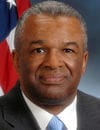Ron Simms on I-937: People power means clean power for the people of Washington state
Initiative 937: People power means clean power for the people of Washington state
Initiative 937, Washington’s clean-energy law, is working to reduce the state’s carbon emissions.
Washington voters in 2006 approved the state’s clean-energy law, Initiative 937, setting new standards for energy efficiency and use of renewable energy. It was a vote for clean energy, new economic investment and a brighter future.
If you’re following the state legislative session, you might think voters were mistaken. Our legislators introduced more than 20 bills to amend or gut the law this year alone. But while some legislators seem to think I-937 is bad for Washington, I’m with the governor in recognizing that it’s good for the economy, good for consumers and good for the environment.
Consider: In meeting the initiative’s energy-efficiency targets, utilities conserved enough electricity to power all the homes in Spokane and Tacoma combined for a full year, saving customers millions of dollars on their electric bills. And I-937 has pushed new renewable-energy investments to nearly $8 billion over the last decade.
New generation facilities developed to meet I-937’s renewables standard are delivering clean and affordable electricity to our homes and businesses. Building wind farms and other new renewables has generated thousands of good construction jobs and hundreds of permanent operation and maintenance jobs through otherwise tough economic times and primarily in rural communities that need the most help.
For example, Eastern Washington farmers who lease their land to wind developers enjoy substantial new income and their local communities benefit from tens of millions of dollars a year of new tax revenues from developers.
With half of our electricity coming from hydropower, we Washingtonians are justly proud of our clean-energy heritage. I-937 builds on that legacy by maximizing energy savings and by diversifying our renewable energy options so the energy we use tomorrow will be at least as clean or cleaner than the energy we use today.
I-937 requires the state’ largest utilities take advantage of all cost-effective energy-efficiency measures while gradually increasing the amount of electricity from a variety of new renewable resources to 3 percent this year, 9 percent by 2016 and 15 percent by 2020.
All 17 affected utilities have reported meeting or exceeding their initial energy-efficiency and renewable-energy standards. The efficiency achievements reduce utility costs and consumer bills. The renewable-energy advances are building the state’s economy and diversifying our energy resources.
Some utilities blame the law for recent rate hikes — but the fact is that even utilities unaffected by I-937 are raising rates.
To repeat, I-937 is working. Its supporters always have been open to discussing changes aimed at making it work better, but “better” does not mean moving us backward and sacrificing the law’s tremendous economic, environmental and climate benefits.
Remember: I-937 is the No. 1 tool for achieving the state’s official greenhouse-gas-reduction targets.
Our state has long prospered by being at the forefront of energy innovation. That tradition continues under I-937. The progress we’re making is worth celebrating — and protecting.
Ron Sims of Seattle is a former King County Executive and former deputy secretary of the U.S. Department of Housing and Urban Development.
